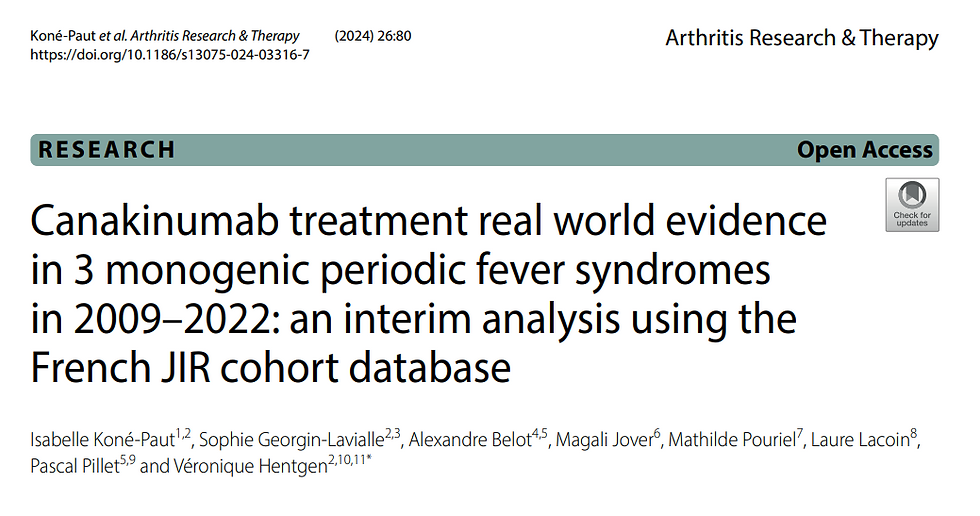- François Rodrigues et al
- Oct 30, 2024
- 1 min read
First author: François Rodrigues et al.
Link to article: https://doi.org/10.1016/j.ejim.2024.10.010

Familial Mediterranean Fever (FMF) is an autosomal recessive disease caused by mutations in MEFV, characterized by recurrent febrile attacks. The natural history of the disease, which began in children and had a high mortality rate in the last century, is unknown in people over 65.
This retrospective study included the records of 59 patients with FMF followed at Hôpital Tenon (Paris, France), representing 9% of the total number of patients followed for FMF. The median age was 73 years. Although all patients were treated with colchicine, the study population, born in the 1940s-1950s, had a late diagnosis (median age 28 years) and a delayed initiation of colchicine (35 years, median year of introduction 1980). 73% of patients had an elevated intercritical CRP on colchicine, and 37% had to receive an inteleukin-1 inhibitor, with good tolerability. The prevalence of AA amyloidosis was 10%. The most frequent comorbidities were cardiovascular (59% of patients) and, unexpectedly, hepatic (37%), with a high frequency of non-alcoholic, non-viral cirrhosis (27%) and no associated diabetes, suggesting a link with FMF. Nine patients (15%) had died at the time of collection, two from complications of FMF, two from hepatic cirrhosis, and five from infections.
In conclusion, the study indicates that FMF can remain active after the age of 65, motivating specialized lifelong follow-up with CRP monitoring between attacks, as well as the prescription of biotherapy in the event of unsatisfactory disease control.

